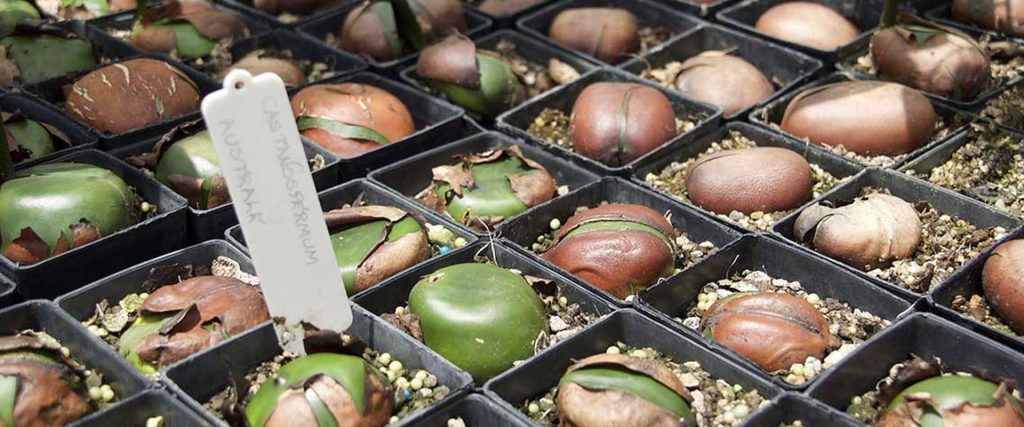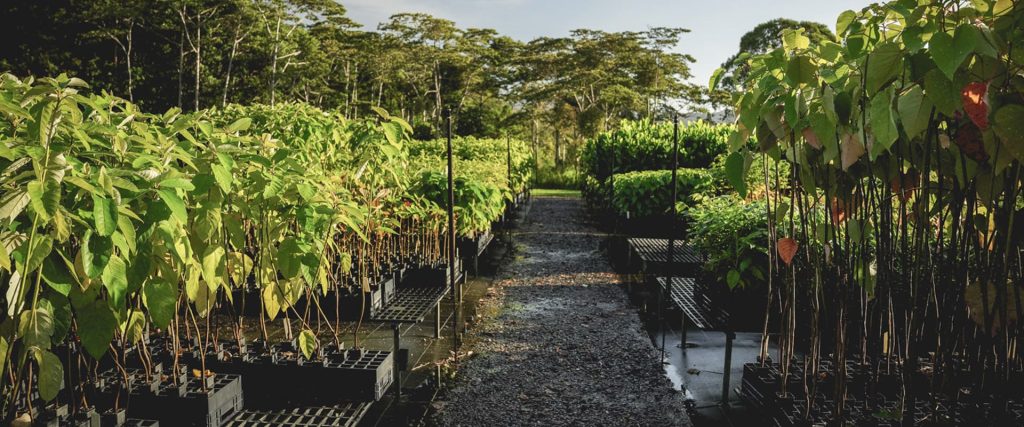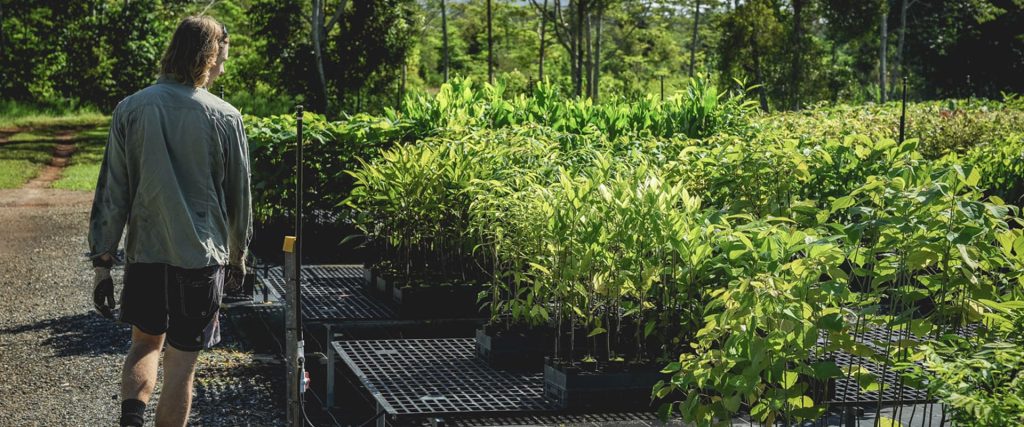How Smart Data Grows Stronger Trees
Capturing and utilising data for tree production in our native tree nursery
 Every seed is a potential source of data that helps make our restoration projects more effective.
Every seed is a potential source of data that helps make our restoration projects more effective.
Our new Nursery Manager, Sam, provides an insight into the importance of data collection and use throughout the cycle of growing native rainforest plants.
At Rainforest Rescue, we are committed to protection and management of rainforest in the Daintree region, which we facilitate through our seed-to-tree process and our restoration procedures. Data collection and implementation is a critical part of this. We grow trees to order for each habitat restoration project and for this we rely upon the database we created by adapting various techniques and management methods.
A Database rooted in species intelligence
The core structure of our database is species information. We collect and store all the relevant data fields on each species we grow. For example: successional stage, growth rate, height, distribution and habitat. Also recorded are detailed descriptions of fruit and leaves to ensure accurate identification, especially when in the field.
Building on the core species information we add data from the seed collection stage. Trees of the relevant species are selected; these need to be mature and healthy specimens and importantly, to have accessible fruits. Upon identification, the locations of these trees are recorded on a GPS system, enabling the seed collectors to easily locate them when needed. GPS logging creates efficiencies for staff members as they can easily access data on the location and fruiting times of the required species. They no longer need to spend excess time in the forest attempting to track down fruiting trees.
Prioritising Genetic Diversity
A healthy forest is reliant on strong genetic diversity. To uphold this principle, we aspire to use at least 10–20 fruiting trees of each native species to avoid repeatedly collecting from the same tree over successive years. In our view, the more parent trees the better. Our seed collectors will add the individual trees to the GPS, to enable good diversity when collecting seeds.
 Propagation offers fascinating data insights into what conditions a species thrives in.
Propagation offers fascinating data insights into what conditions a species thrives in.
Smarter Propagation
The next stage in the database is the propagation stage. There are many factors which differ between species during this point in the growth cycle. We record fruiting times and any seed treatments used to increase germination success, for example: scarification, peeling and soaking. As with any ecosystem, there are also variations in germination times and growth rates, with pioneer and late stage species varying greatly in these datapoints.
Recording this information is important as it is utilised during production to determine the growth order of the required species. By understanding growth rates for each species we can work to cue up the maturation points for planting. Then, when the order reaches its dispatch date, we have a ‘synced’ batch of native plants. Typically we work backwards, by producing the slower growing trees earliest.
 Through growing many thousands of trees, we’re expanding the knowledge available on rainforest species.
Through growing many thousands of trees, we’re expanding the knowledge available on rainforest species.
Learning Through Trial and Error
We have established and developed our sowing methods over time because there is little information readily accessible for propagating Australian Wet Tropics rainforest trees. While there is some information on seed preparation available, we have discovered that it is often irrelevant to the specific native species we need for a project order.
When compiling the propagation database, we can use information that’s available for a similar species (or the same genus if the seed morphology is the same). We’ve discovered that a willingness to experiment can yield propagation results, we believe in ‘failing forwards’ and logging issues and unsuccessful seed germination. All data is recorded for future use, as trial and error can lead to great success! In fact, by collecting detailed information on seed processing we can see a direct correlation with exceptional germination rates.
Tracking Progress and Forecasting the Future
We have an extensive, shared Jotform database where staff record details of propagation, potting, hardening, plant losses, causes of loss and planting. A chief benefit is that this logging enables us to track numbers that are available for production and for dispatch. We can then monitor growth rates and causes of loss to gauge the additional percentile of plants required to fulfil an order.
Building on this formula, we then use the data from production and planting to create projections for future work. These insights give our team a clear understanding of our resources and limitations.
Like most independent organisations developing ‘from the ground up’, we have developed our systems through trial and error and we are adaptive in our methods. Collaborating with other nursery teams within the Wet Tropics Restoration Alliance is a valuable way to pool learnings and collectively progress the information available about rainforest plant propagation and growth.
 The strength of our data is helping us to scale our nursery to meet demands for larger-scale habitat restoration.
The strength of our data is helping us to scale our nursery to meet demands for larger-scale habitat restoration.
Keeping Records = Growing Resilience
With the impact of climate change and biodiversity loss, keeping highly accurate records of the catalogue of native species through every stage from seed collection to planting is pivotal. The data enables us to study trends that may be emerging over time. We have worked in conjunction with research teams from James Cook University, and provided input into projects from organisations like Terrain NRM. In time, we hope to work on a project with Jabalbina Yalanji Aboriginal Corporation – where cultural and botanical information comes together in a shared resource.
As Nursery Manager, I do of course keep a close eye on our effectiveness as a place of plant production. Rainforest Rescue’s Native Nursery is the most productive nursery in the region, scaling to 150,000 trees a year. Our data methodologies help us to manage costs in labour and growing resources, with simple efficiencies like reducing the time spent checking stock and availability.
We believe it is important to keep good records of any planting trials or propagation experiments, allowing us to have the data available to adapt production methods accordingly. Input and data records from all team members are worthwhile and help to develop successful working practices. An organisation‘s data is essential for its ‘brain’ to function effectively!
Our wonderful supporters helped us to take our native nursery to the next level, now our data is helping us to grow it even further.
Rainforest Rescue’s Native Nursery in Cow Bay can grow trees to order for small- to large-scale restoration projects. If you would like to learn more and discuss a potential habitat restoration in the Wet Tropics, take a look at our Nursery Orders page.
Want more good Rainforest news in your life?
Subscribe to our eNews | Follow us on Instagram | Like us on Facebook | Subscribe to our YouTube channel
Help Protect Rainforests Forever
Donate to Protect Rainforests Forever | Become a Rainforest Guardian for as little as $2 a month | Partnership Options

